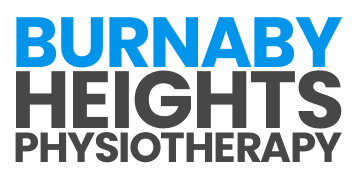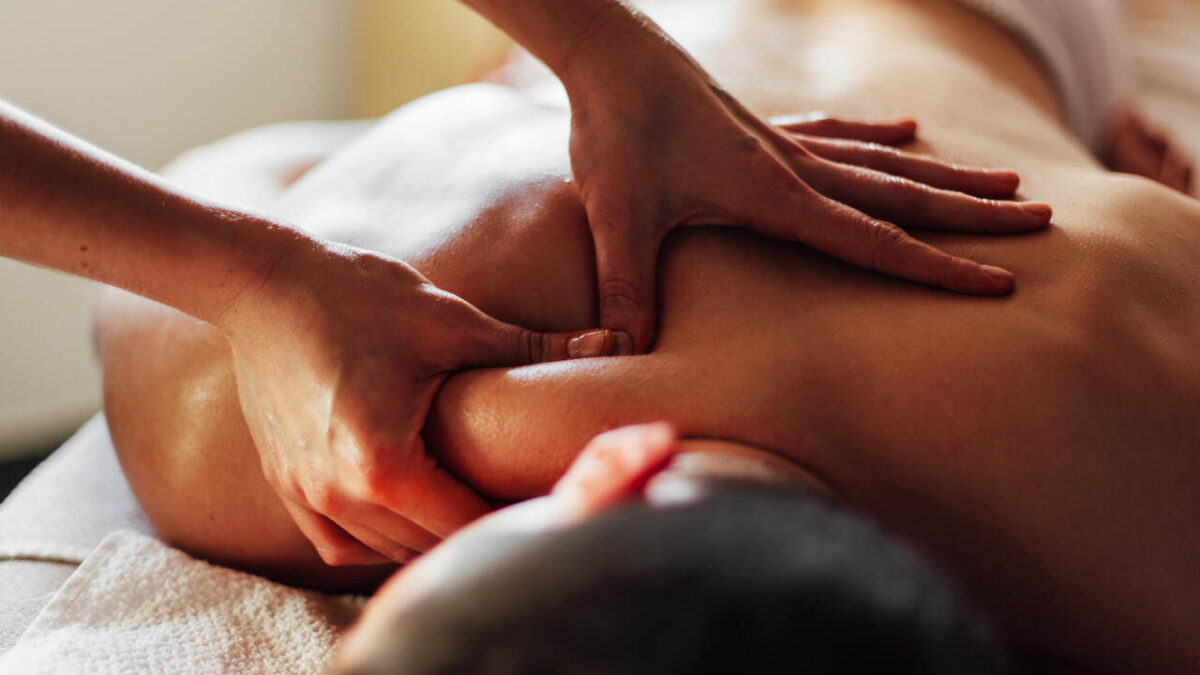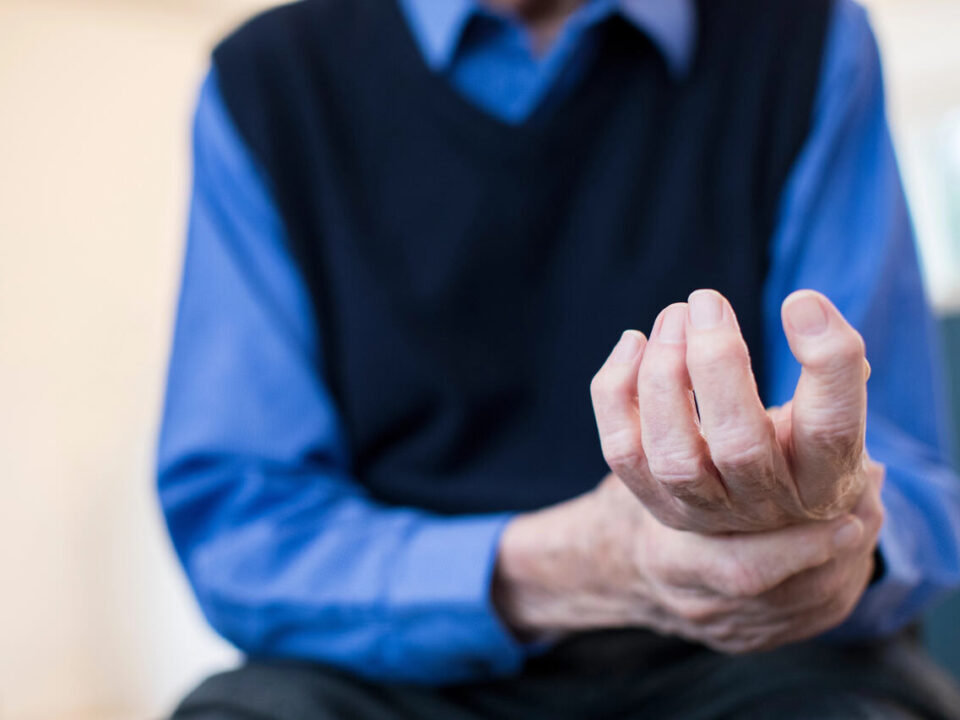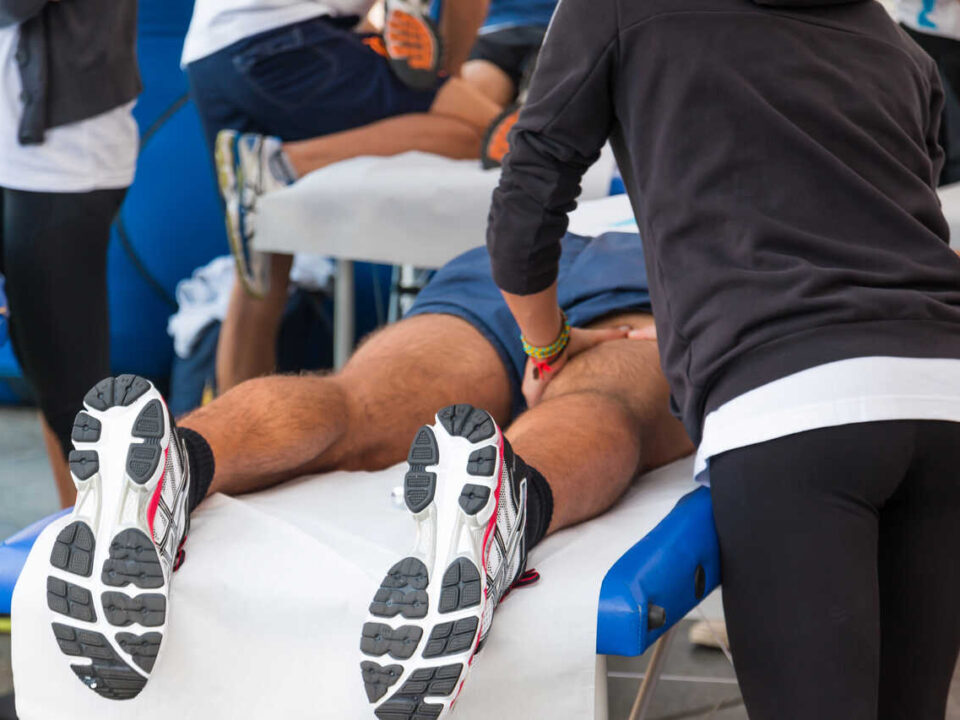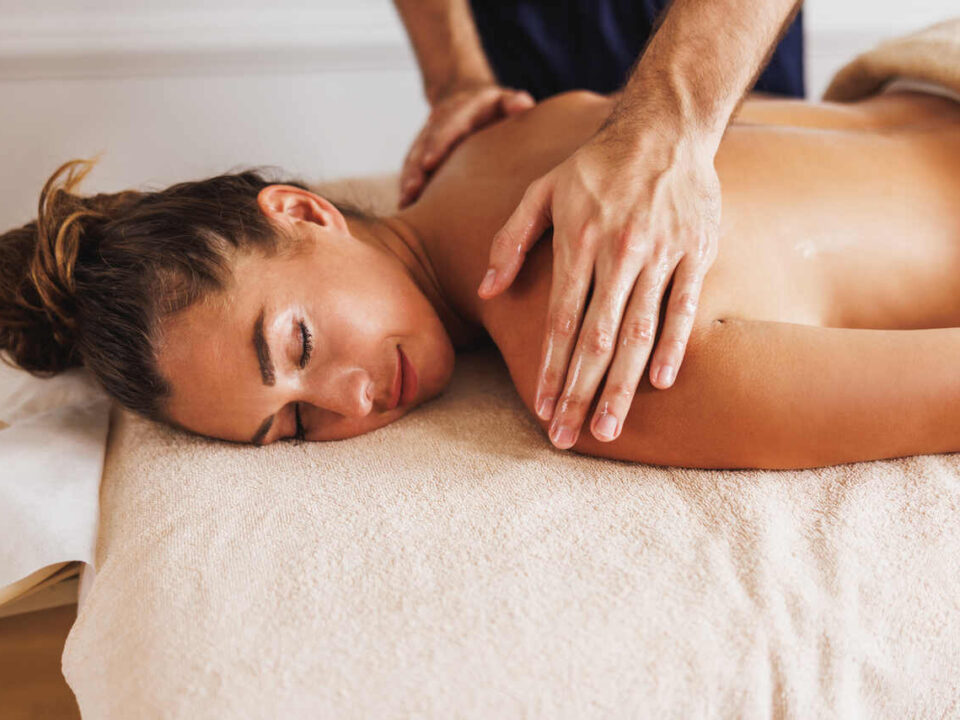
Finding Freedom: How Massage Therapy Can Help Carpal Tunnel Syndrome
July 18, 2024
Say Goodbye to Muscle Knots: Deep Tissue Massage Therapy Revealed
July 18, 2024Benefits of Massage Therapy for Seniors
Massage therapy offers numerous benefits for seniors, addressing common issues such as aches and pains, circulation, and overall well-being. Understanding these benefits can help you make informed decisions about incorporating massage into your routine.
Relieving Aches and Pains
As you age, aches and pains can become more frequent and persistent. Massage therapy can provide significant relief from these discomforts. Techniques like Swedish massage therapy and deep tissue massage therapy work to alleviate muscle tension and reduce pain in areas such as the back, shoulders, and joints. Massage helps increase blood flow to affected areas, promoting faster healing and reducing inflammation.
| Common Pain Areas | Massage Techniques |
|---|---|
| Back | Swedish Massage, Deep Tissue Massage |
| Shoulders | Trigger Point Therapy |
| Joints | Lymphatic Drainage Massage |
Improving Circulation and Mobility
Poor circulation and reduced mobility are common concerns for seniors. Massage therapy can enhance blood flow, which supports better oxygen and nutrient delivery to tissues and organs. Improved circulation can also aid in the reduction of swelling and fluid retention. Techniques such as lymphatic drainage massage therapy are particularly effective for improving circulation.
Regular massage sessions can also help improve mobility by reducing stiffness and increasing flexibility. This can make daily activities easier and more enjoyable, contributing to a higher quality of life.
Enhancing Overall Well-Being
Beyond physical benefits, massage therapy can significantly enhance your mental and emotional well-being. The relaxing nature of massage helps to reduce stress and anxiety, promoting a sense of calm and relaxation. This can be particularly beneficial for seniors who may experience increased levels of stress or depression.
Massage therapy also encourages the release of endorphins, the body’s natural feel-good hormones. This release can improve mood and overall emotional health. Regular sessions can provide a consistent boost to your mental and emotional well-being, making it easier to manage daily challenges.
For more information on the benefits of massage therapy, visit our article on massage therapy benefits. Additionally, exploring different types of massage therapy can help you find the best fit for your needs.
Types of Massage Therapy
Understanding the various types of massage therapy can help you select the most suitable option for your needs. Here are three popular types of massage therapy that can be particularly beneficial for seniors.
Swedish Massage
Swedish massage is one of the most common forms of massage therapy. This technique involves long, gliding strokes, kneading, and circular movements on the topmost layers of muscles. It is designed to relax the entire body and improve circulation.
Benefits of Swedish massage for seniors include:
- Relief from muscle tension
- Improved blood flow
- Enhanced relaxation and stress reduction
For more about Swedish massage therapy, visit our detailed guide on swedish massage therapy.
Deep Tissue Massage
Deep tissue massage focuses on the deeper layers of muscle tissue. This type of massage uses slower strokes and deeper pressure to target areas of tension and pain. It is particularly effective for treating chronic pain and muscle injuries.
Benefits of deep tissue massage for seniors include:
- Alleviation of chronic pain
- Reduction of inflammation
- Improved mobility and flexibility
For more information on deep tissue massage therapy, check out our article on deep tissue massage therapy.
Aromatherapy Massage
Aromatherapy massage combines the benefits of massage with the therapeutic use of essential oils. The oils are either inhaled or applied to the skin during the massage. Each essential oil has unique properties that can help with various health issues, from stress and anxiety to muscle pain and inflammation.
Benefits of aromatherapy massage for seniors include:
- Enhanced mood and relaxation
- Relief from pain and discomfort
- Improved sleep quality
To learn more about the benefits and techniques of aromatherapy massage, read our comprehensive article on types of massage therapy.
By understanding these different types of massage therapy, you can make an informed decision about which method may best suit your needs. Whether you choose Swedish, deep tissue, or aromatherapy massage, each offers unique benefits that can enhance your overall well-being. For more insights into the various massage therapy techniques, explore our other articles.
Considerations for Seniors
When it comes to massage therapy for seniors, there are several important considerations to keep in mind to ensure a safe and effective experience.
Tailored Techniques for Seniors
Massage therapy techniques should be tailored to meet the specific needs of seniors. Older adults may have more delicate skin, fragile bones, and different levels of mobility. It’s essential to use gentle, yet effective techniques to avoid causing any discomfort or injury. Techniques such as Swedish massage therapy and lymphatic drainage massage therapy are often suitable due to their gentle nature.
Addressing Specific Health Conditions
Seniors may have various health conditions that require special attention during a massage session. Conditions such as arthritis, fibromyalgia, and back pain can affect the type of massage and techniques used. For example, massage therapy for arthritis and massage therapy for fibromyalgia often require specific approaches to alleviate symptoms effectively. It’s crucial to discuss any health conditions with your massage therapist so they can adapt their techniques accordingly.
| Health Condition | Recommended Massage Type |
|---|---|
| Arthritis | Swedish, Trigger Point Therapy |
| Fibromyalgia | Swedish, Lymphatic Drainage |
| Back Pain | Deep Tissue, Rehabilitative Massage |
Communication with Your Massage Therapist
Open and honest communication with your massage therapist is key to a successful session. Make sure to inform them about any discomfort, medical conditions, or specific areas that need attention. This helps the therapist to adjust their techniques and pressure to suit your needs. Additionally, discussing your preferences and concerns can enhance the overall experience and effectiveness of the massage.
For more tips on effective communication with your therapist, refer to our guide on massage therapy techniques.
By considering these factors, you can ensure that your massage therapy sessions are both safe and beneficial, enhancing your overall well-being and addressing specific health concerns.
Safety Precautions
When considering massage therapy for seniors, it’s crucial to follow certain safety precautions to ensure a comfortable and beneficial experience. This section outlines gentle pressure and techniques, positioning for comfort and support, and sensitivity to medical devices or conditions.
Gentle Pressure and Techniques
Seniors often have more delicate skin and fragile bones, making it essential to use gentle pressure during massage therapy. Techniques should be adjusted to suit their specific needs, minimizing the risk of injury while still providing relief and relaxation.
| Technique | Description | Pressure Level |
|---|---|---|
| Swedish Massage | Long, gliding strokes | Light |
| Aromatherapy Massage | Use of essential oils with gentle strokes | Light |
| Reflexology | Applying pressure to specific points on the feet | Moderate |
For more information on various techniques, visit our article on massage therapy techniques.
Positioning for Comfort and Support
Proper positioning is key to ensuring a comfortable and supportive massage session for seniors. This can help prevent strain on joints and muscles, and enhance the overall effectiveness of the therapy.
- Use of Cushions: Placing cushions under the knees or lower back can provide additional support.
- Adjustable Tables: Ensuring the massage table is adjustable to accommodate different body positions.
- Seated Options: Offering seated massage options for those who may find it challenging to lie down.
For more details on different massage types, check out types of massage therapy.
Sensitivity to Medical Devices or Conditions
Seniors may have medical devices such as pacemakers or conditions that require special attention during massage therapy. Being aware of these and adjusting techniques accordingly is vital for their safety.
| Medical Device/Condition | Consideration | Adjustment |
|---|---|---|
| Pacemaker | Avoiding pressure on the chest area | Light pressure |
| Osteoporosis | Fragile bones | Gentle techniques |
| Arthritis | Joint pain and inflammation | Targeted relief |
For specific conditions like arthritis, refer to our article on massage therapy for arthritis.
By adhering to these safety precautions, you can ensure a safe and effective massage therapy experience for seniors.
Finding the Right Massage Therapist
When looking for the right massage therapist for seniors, it’s crucial to consider their qualifications, experience with senior clients, and personal compatibility. These factors ensure that the massage therapy sessions are both effective and enjoyable.
Qualifications and Certifications
The first step is to verify the qualifications and certifications of the massage therapist. A licensed massage therapist (LMT) has completed the necessary education and training to provide professional massage services. Look for therapists who have additional certifications in areas such as geriatric massage, which focuses on the unique needs of older adults.
| Qualification | Description |
|---|---|
| Licensed Massage Therapist (LMT) | Completed state-approved training and passed a licensing exam |
| Geriatric Massage Certification | Specialized training in massage techniques for seniors |
| Continuing Education | Ongoing courses to stay updated on best practices |
Experience with Senior Clients
Experience with senior clients is another critical factor. A therapist who has worked extensively with older adults will be familiar with the specific challenges and conditions that may arise. They will know how to modify techniques to accommodate issues such as arthritis, limited mobility, or chronic pain. For instance, therapists trained in massage therapy for arthritis can provide targeted relief.
| Experience | Description |
|---|---|
| Years of Experience | Number of years working with senior clients |
| Specialized Training | Courses or workshops focused on senior care |
| Client Testimonials | Reviews and feedback from senior clients |
Personal Compatibility and Comfort
Personal compatibility and comfort are essential for a positive massage therapy experience. The therapist should be someone you feel comfortable with and can communicate openly. Effective communication ensures that your specific needs and preferences are understood and addressed. It’s important to discuss any health conditions, preferences for pressure and techniques, and any areas of concern before the session begins.
For more information on different types of massage therapies and their benefits, you can explore our articles on types of massage therapy and massage therapy benefits. Ensuring that the therapist aligns with your personal preferences will make the experience more enjoyable and beneficial.
By considering qualifications, experience, and personal compatibility, you can find the right massage therapist to help alleviate aches, improve mobility, and enhance overall well-being.
Incorporating Massage Therapy into Your Routine
Integrating massage therapy into your routine can significantly enhance your overall well-being. By understanding the frequency of sessions, the benefits of regular therapy, and self-care tips, you can make the most out of your massage therapy experience.
Frequency of Sessions
Determining the ideal frequency of massage sessions depends on your personal needs and health conditions. Generally, it’s advisable to start with more frequent sessions and then adjust based on how your body responds.
| Frequency | Session Type | Benefits |
|---|---|---|
| Weekly | Therapeutic or Deep Tissue | Relieves chronic pain, enhances mobility |
| Bi-weekly | Swedish or Aromatherapy | Maintains relaxation, reduces stress |
| Monthly | Any Type | General well-being, occasional relief |
For specific health conditions, like arthritis or fibromyalgia, more frequent sessions may be required initially.
Benefits of Regular Massage Therapy
Regular massage therapy offers numerous benefits, particularly for seniors. Consistent sessions can help manage chronic pain, improve circulation, and enhance overall quality of life.
- Pain Relief: Regular sessions can alleviate aches and pains, making daily activities more manageable.
- Improved Circulation: Frequent therapy ensures better blood flow, which is crucial for maintaining mobility.
- Enhanced Relaxation: Regular massages reduce stress and promote mental well-being.
For more detailed benefits, visit our article on massage therapy benefits.
Self-Care Tips for Maintaining Results
Incorporating self-care practices between your massage sessions can help maintain the benefits of the therapy.
- Stay Hydrated: Drinking water helps flush out toxins released during the massage.
- Stretch Regularly: Gentle stretching can improve flexibility and keep your muscles loose.
- Use Heat Therapy: Applying a warm compress can soothe sore muscles.
For more techniques, explore our guide on massage therapy techniques.
By understanding the frequency, benefits, and self-care tips, you can effectively incorporate massage therapy into your routine, making it a pivotal part of your health and wellness regimen.


